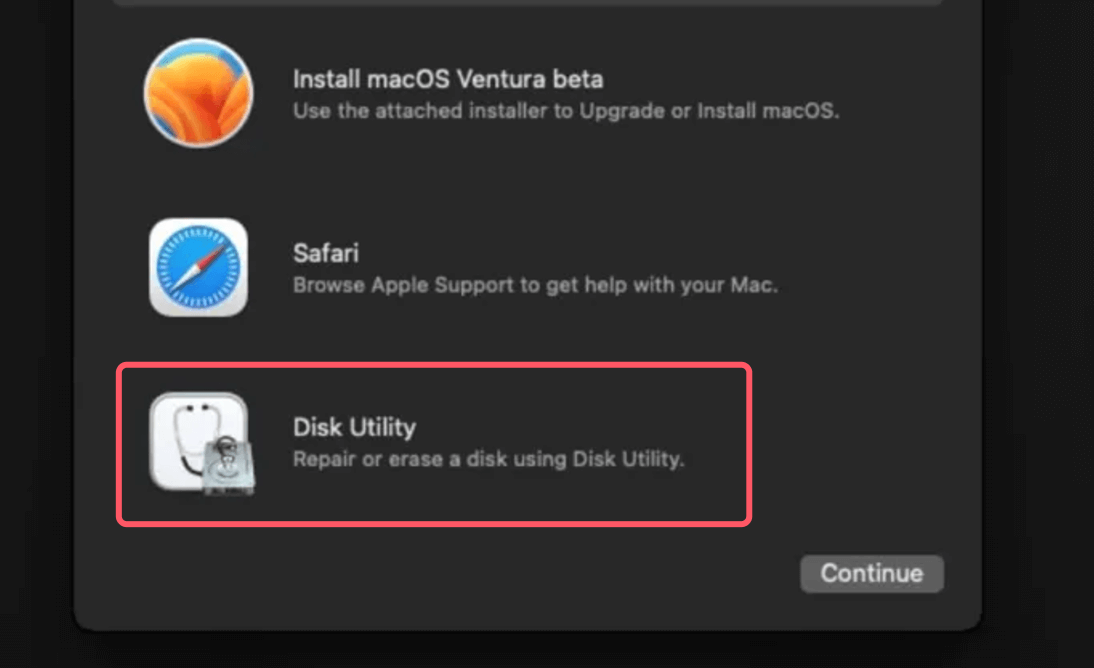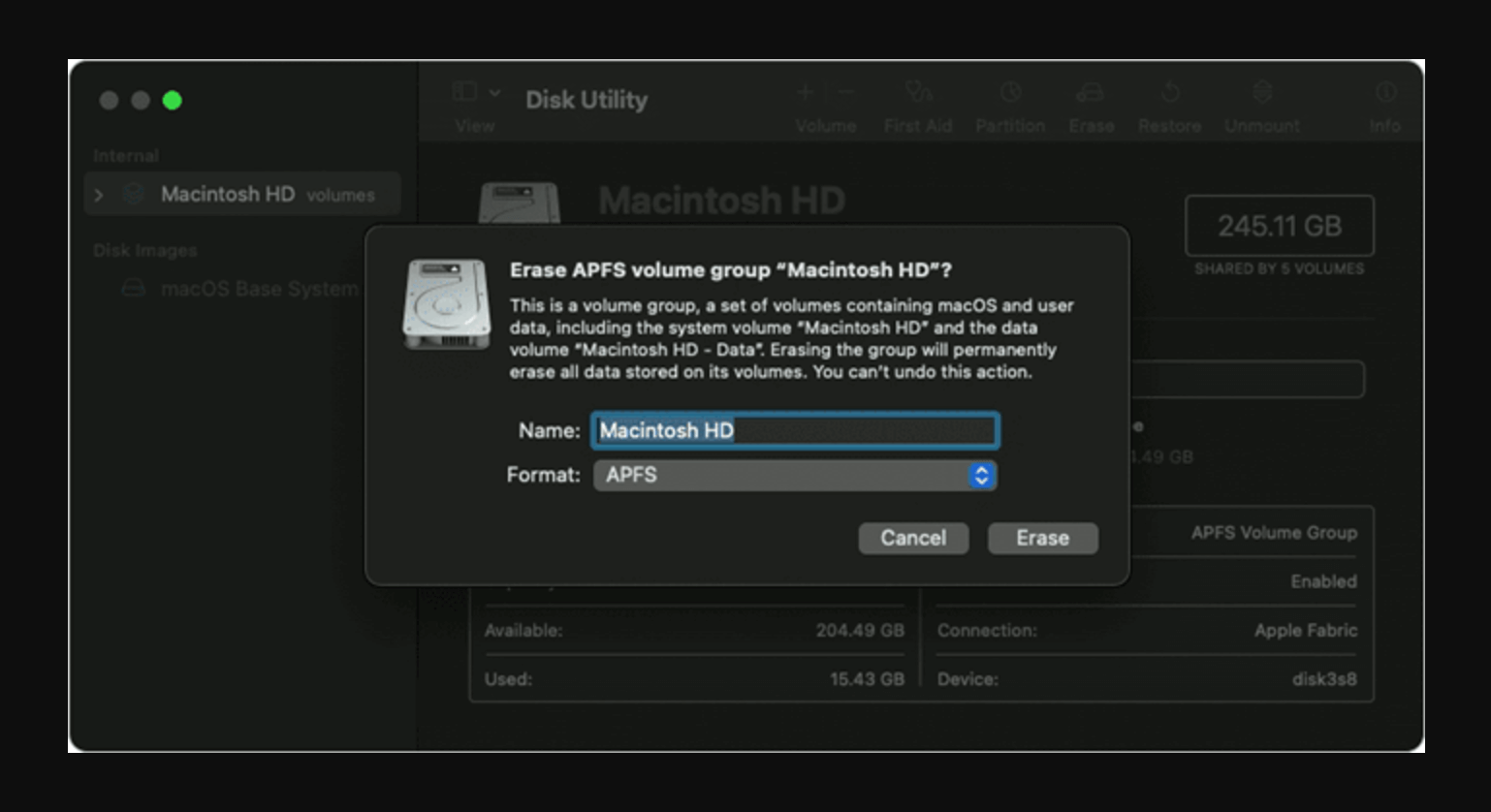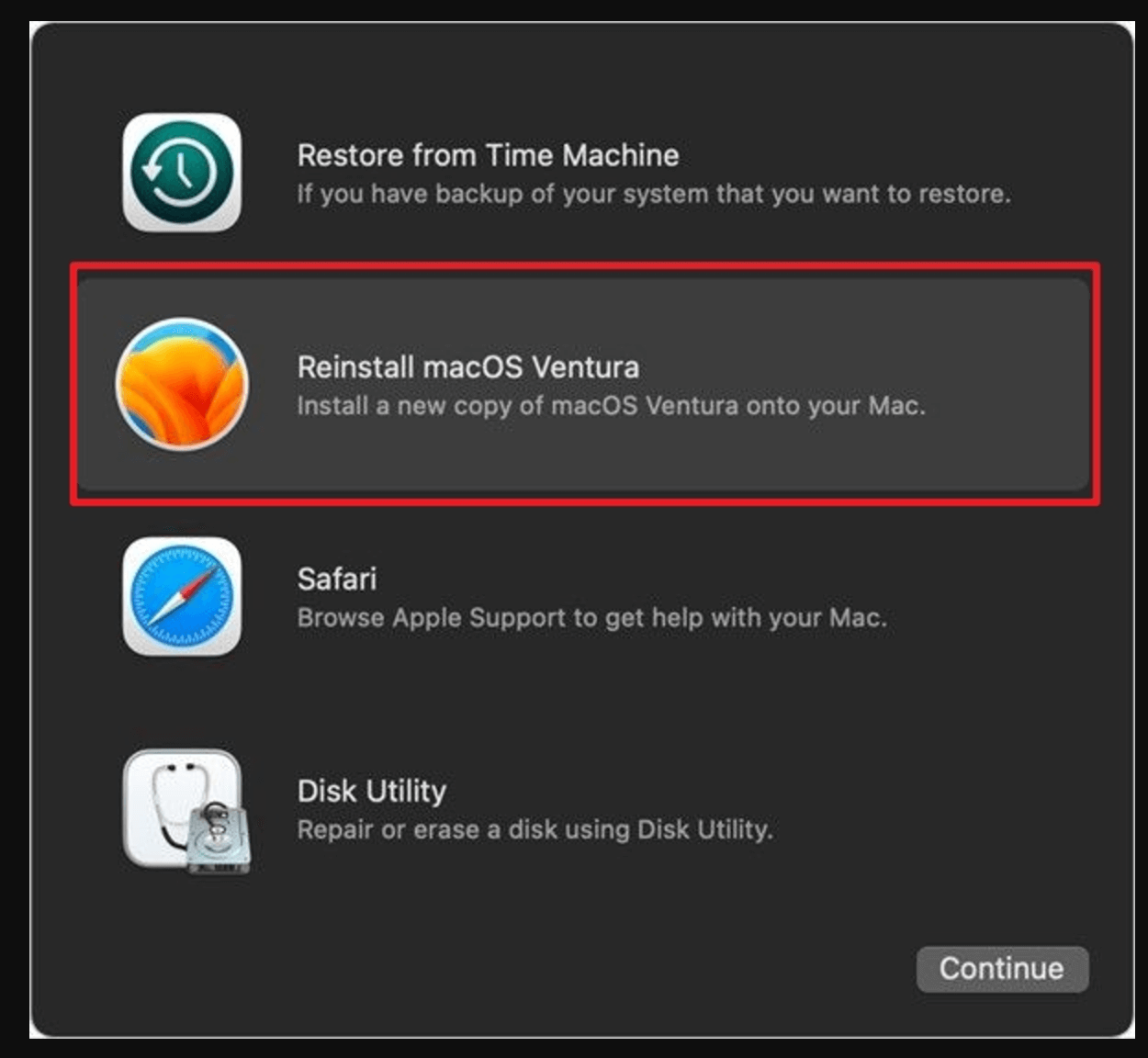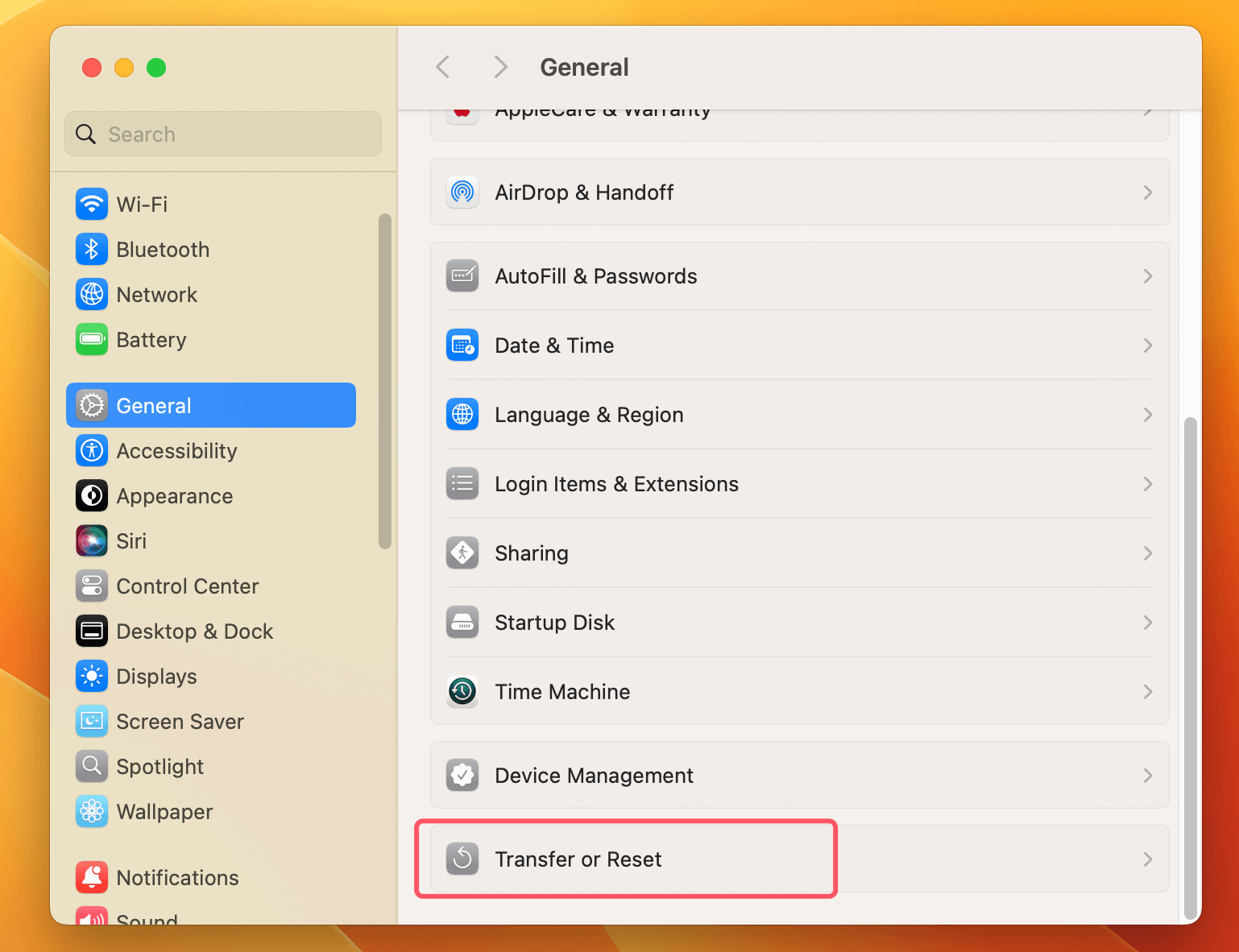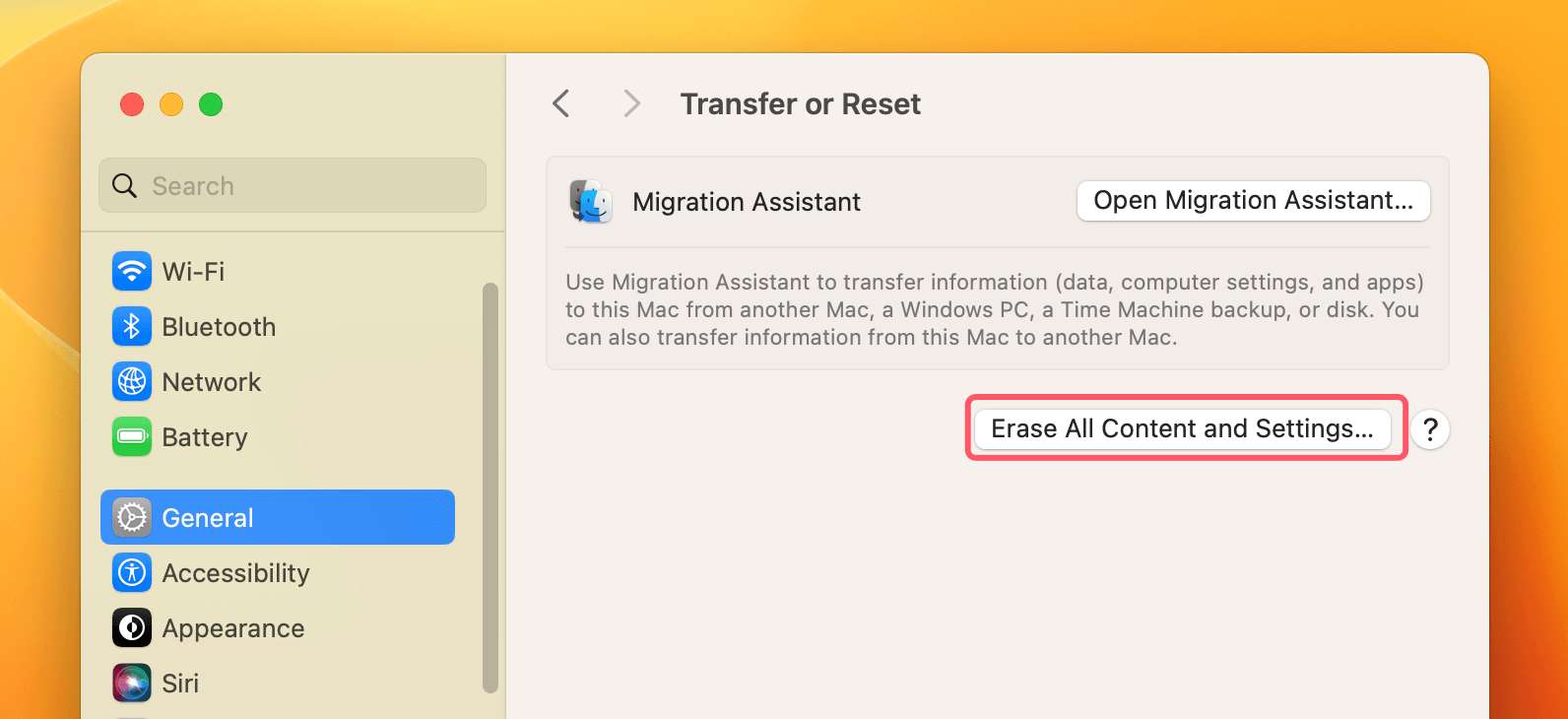Tip: Before selling or donating a Mac running macOS Ventura, you need to factory reset the macOS first. And then use disk wipe software - such as Donemax Data Eraser for Mac to wipe free disk space of the Mac. After that, there is no way to recovery your personal data.
PAGE CONTENT:
macOS Ventura is a robust and feature-rich operating system, but sometimes, a factory reset becomes necessary. If you're preparing to sell your Mac, troubleshooting persistent software issues, or simply starting fresh, understanding how to factory reset macOS Ventura safely and effectively is crucial. A factory reset can also help you troubleshoot issues or start a freash. This guide walks you through every step of the process to ensure your data is safe and your system runs smoothly afterward. This guide walks you through every step of the process to ensure your data is safe and your system runs smoothly afterward
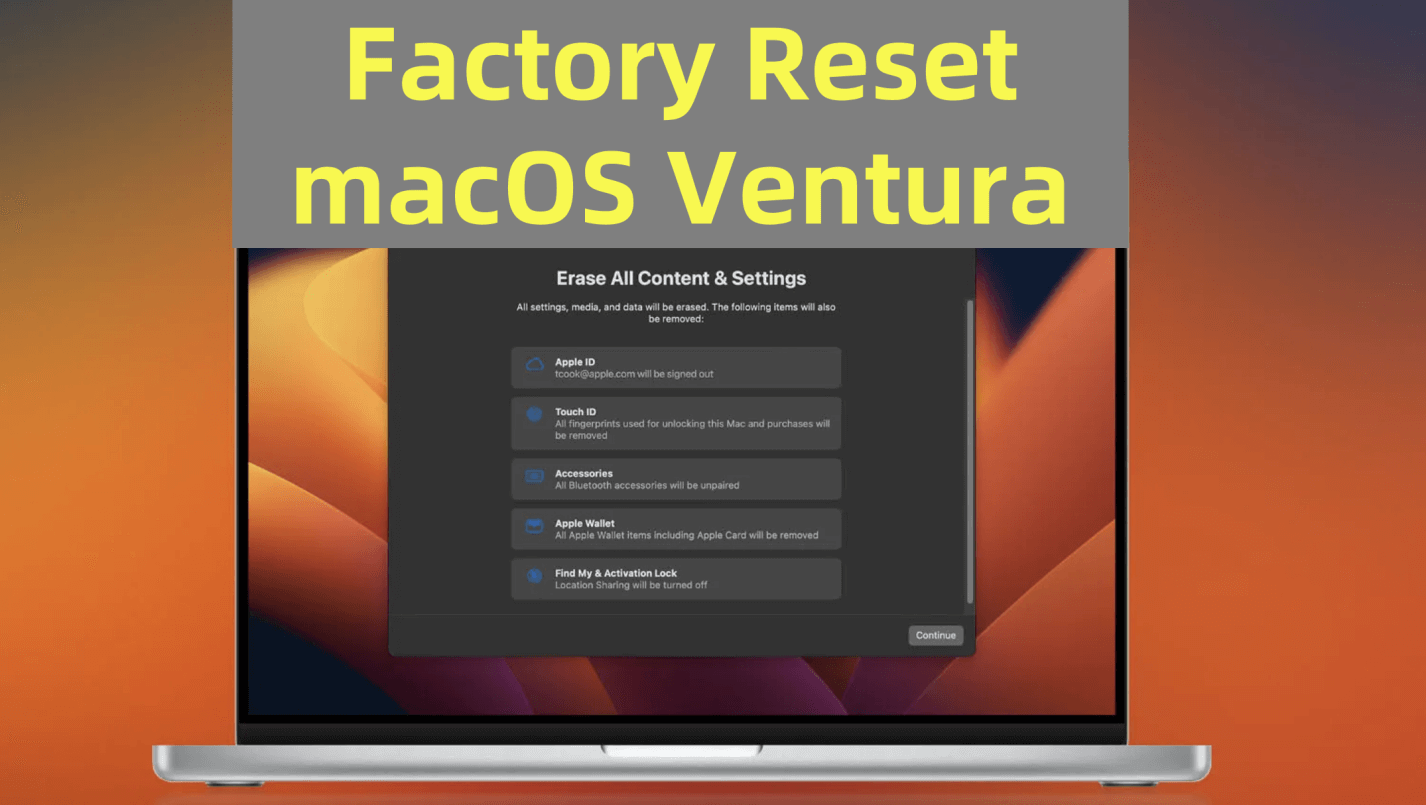
Things You Need to Do Before Factory Reset macOS Ventura
Before embarking on the journey of factory resetting macOS Ventura, it's essential to prepare your Mac properly. This step is crucial not only for safeguarding your data but also for ensuring a smooth and trouble-free reset process. Here, we dive deeper into each task to help you set the stage for success.
1. Backup Your Data
The importance of backing up your data cannot be overstated. A factory reset will erase everything on your Mac, including personal files, documents, photos, videos, and installed applications. Losing these without a backup can be devastating. Especially if intend to reset the macOS to resolve a specific problem rather than start fresh.
Apple's Time Machine remains the gold standard for backing up a Mac. This built-in utility is both intuitive and effective. To create this backup:
- Attach your Mac to an external hard disk.
- Select General > Time Machine from the System Settings menu.
- Launch the backup procedure after choosing the external drive as your backup disk.
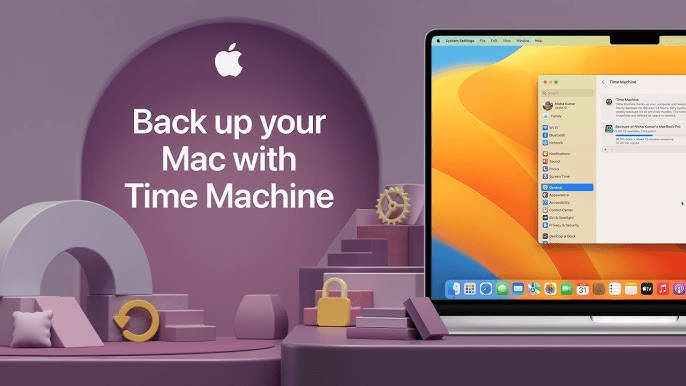
Time Machine offers incremental backups, meaning it saves changes made to your files over time. This enables you to recover particular file versions following a Mac reset.
For those who prefer alternatives, third-party tools like Donemax Disk Clone for Mac provides powerful cloning features. The software you to create an exact replica of your system. Cloud storage services such as iCloud Drive, Google Drive, or Dropbox also store essential files online, accessible anytime, anywhere.
🔗 Related article: How to make a full bootable clone backup for macOS Ventura?
2. Sign Out of iCloud and Other Services
Failing to sign out of iCloud and other services can lead to complications during the reset process. Apple employs a security feature called Activation Lock, which links your Apple ID to the Mac. This feature protects against unauthorized access. It can also prevent you from completing the reset if you forget to sign out beforehand.
To sign out of iCloud:
- Open System Settings.
- Click your Apple ID at the top of the sidebar.
- Scroll down and select Sign Out.
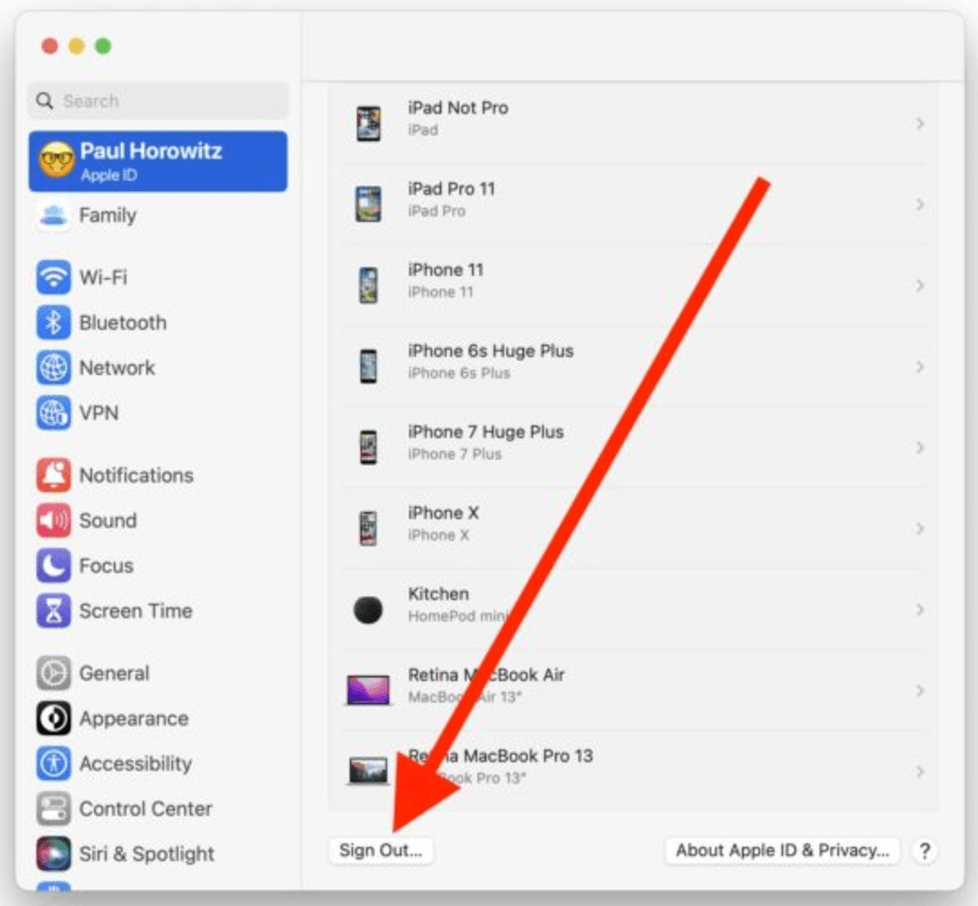
When signing out Apple account, your Mac will ask if you'd like to keep a copy of iCloud data. Choose based on your backup preferences, as factory reset will erase the data.
Don't forget to sign out of other services like iMessage, FaceTime, etc. This ensures your system is entirely disconnected from your personal accounts. The sign out operation is especially important if you're selling or giving away your device.
3. Confirm Requirements
A successful reset requires meeting a few essential conditions. First, ensure your MacBook has sufficiently power or plug the Mac into power during the process. A sudden loss of power during the reset could result in data corruption or system errors.
Next, verify your internet connection. Reinstalling macOS Ventura typically requires downloading the operating system files from Apple's servers. A stable Wi-Fi connection ensures this process runs without interruptions. If you're working in an area with unreliable Wi-Fi, consider using a wired Ethernet connection for added stability.
Lastly, make sure your hardware satisfies the system requirements for the reset and reinstallation. If you're unsure, check Apple's official support documentation for compatibility details.
Once your preparations are complete, you’re ready to reset your Mac. Follow these detailed steps to perform a factory reset on macOS Ventura.
How to Factory Reset macOS Ventura?
Step 1: Boot Into macOS Recovery Mode
Recovery Mode is a special environment that allows you to repair or reinstall macOS. Here's how to access it:
- Give your Mac a restart.
- Press and hold Power button until Loading Startup Options appears, then choose Options and click Continue. Press and hold Command + R (for Intel-based Mac) to boot in to macOS Recovery mode.
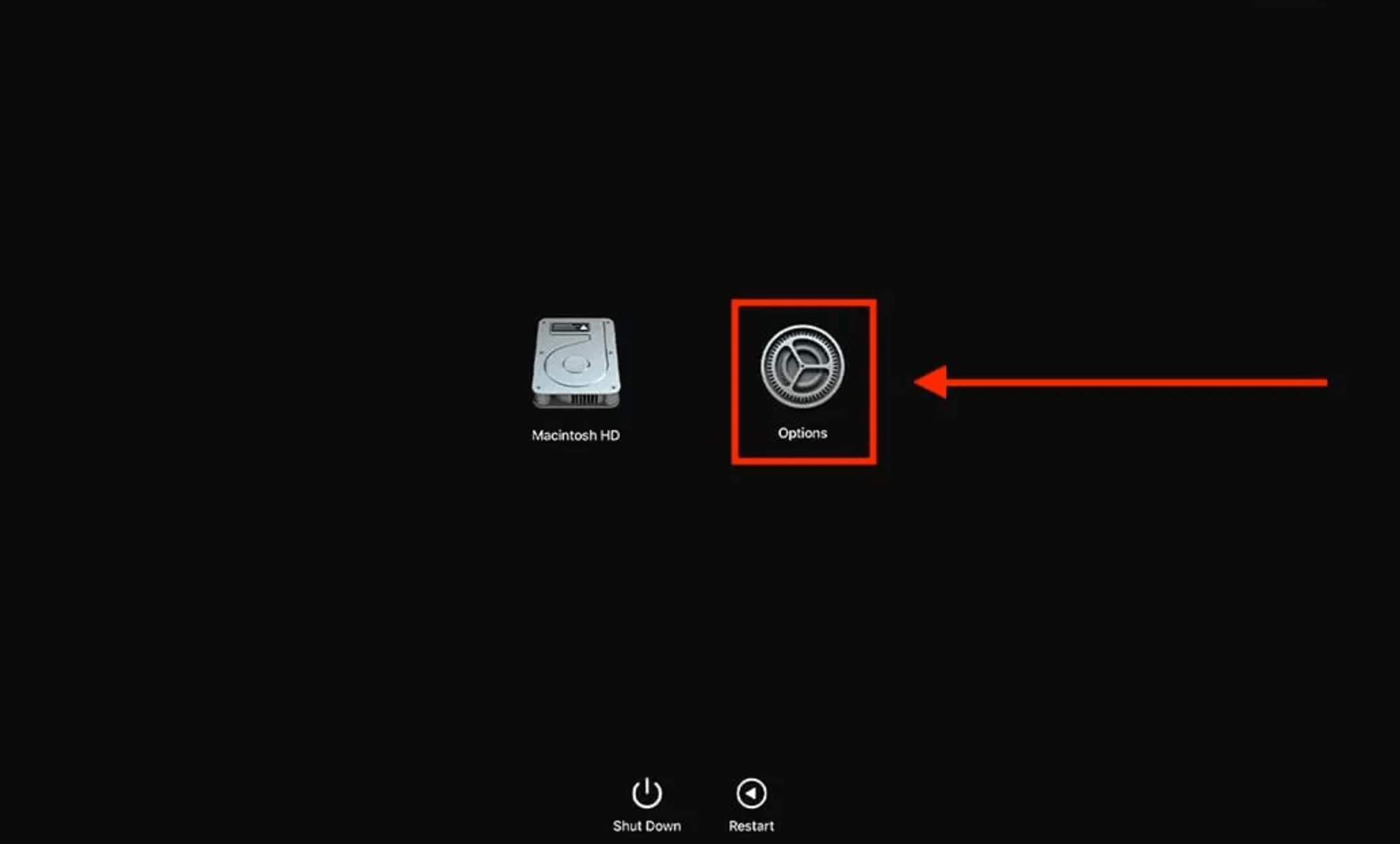
Step 2: Erase the Disk
With Recovery Mode open, the next step is to erase your Mac's internal storage. This ensures a clean slate for reinstalling macOS Ventura.
- Choose Disk Utility from the macOS Utilities box, then click Continue.
![Factory Reset macOS 13 Ventura]()
- In Disk Utility, locate your startup disk (typically named Macintosh HD).
- Select the disk and click Erase at the top of the window.
- Choose a format: Choose Mac OS Extended (Journaled) for older Macs or APFS for newer Macs.
- Click Erase to confirm.
![Factory Reset macOS 13 Ventura]()
After the process completes, to get back to the macOS Utilities window, shut Disk Utility.
Step 3: Reinstall macOS Ventura
With your disk erased, it's time to reinstall macOS Ventura.
- Click Continue after choosing Reinstall macOS Ventura in the macOS Utilities window.
![Factory Reset macOS 13 Ventura]()
- Follow the on-screen prompts to select your disk and begin the installation.
- Ensure your Mac remains connected to power and Wi-Fi throughout the process.
Depending on your Mac model and internet speed, the installation could take a while. Once complete, your Mac will restart and display the setup assistant.
You also can use Erase All Content and Settings feature to help you reset macOS Ventura:
- Click Apple logo, choose System Settings.
- Go to General > Transfer or Reset.
![Factory Reset macOS 13 Ventura]()
- Click Erase All Content and Settings.
![Factory Reset macOS 13 Ventura]()
- Then a window (erase assistant) opens, follow the onscreen instructions to erase everything from the Mac.
![Factory Reset macOS 13 Ventura]()
Step 4: Post-Reset Setup
A freshly reset Mac requires configuration before it's ready to use. The setup process is straightforward and allows you to customize your preferences.
Initial Configuration:
After the reset, your Mac will guide you through its setup assistant. This includes:
- Choosing a Language and Region: Select your preferred options for the interface and keyboard.
- Connecting to Wi-Fi: Choose your network and enter the password.
- Signing in With Your Apple ID: Enter your Apple ID credentials to sync iCloud, the App Store, and other services.
- Setting Up Security Options: Create a password for your Mac and enable features like Touch ID or Face ID.
Follow the on-screen prompts to complete the setup.
Restoring Backup (If Applicable):
If you created a backup before resetting, you can restore your data now. During setup, macOS will offer the option to migrate data from a backup. Choose From a Time Machine Backup and connect your backup drive to begin the restoration process.
Otherwise, manually transfer files from cloud storage or external drives after setup is complete.
Testing the System:
Once your Mac is up and running, test the system to ensure everything works as expected. Verify that the reset resolved any issues you were experiencing. Check and confirm that essential features like Wi-Fi, Bluetooth, and installed apps function properly.
Common Troubleshooting Tips
Despite following the steps, issues can sometimes arise during the reset process. Here are some troubleshooting tips to address common problems.
Can't Access Recovery Mode:
If you're unable to enter Recovery Mode, try these solutions:
- For Intel Macs: Ensure you're holding Command (⌘) + R immediately after restarting.
- For Apple Silicon Macs: Make sure you’re pressing and holding the Power button long enough to access startup options.
- Use Internet Recovery: Restart your Mac and press Option (⌥) + Command (⌘) + R to enter Internet Recovery. This requires a strong internet connection.
Disk Won't Erase:
If Disk Utility fails to erase your disk:
- Ensure you've selected the correct disk.
- Click View in the Disk Utility toolbar and choose Show All Devices to locate the parent disk.
- Boot into Internet Recovery and repeat the erasure process.
Installation Issues:
If macOS Ventura fails to reinstall:
- Check your internet connection.
- Restart your Mac and try again.
- Use a bootable USB installer if the issue persists. You can create one on another Mac using the Terminal.
Data Loss During Factory Reset:
Factory resetting macOS Ventura will remove all the personal data. You can use Mac data recovery software to get the lost data back if you didn't back up the data.
Step 1. Download and install the best Mac data recovery software on your Mac.
Step 2. Open Donemax Data Recovery for Mac, select the internal drive (usually named Macintosh HD).

Step 3. Click on Scan button to deeply scan the internal drive and find all missing files.
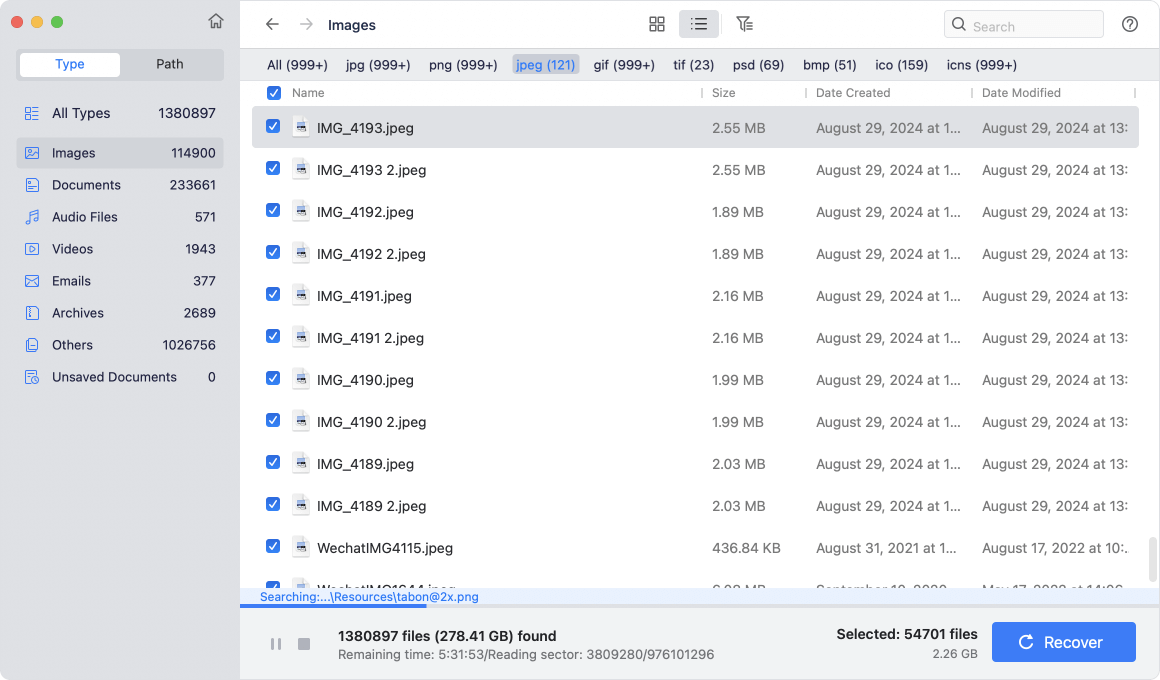
Step 4. Once the scan is completed, you can preview all found files. Select the wanted files and click on Recover button to save the files.
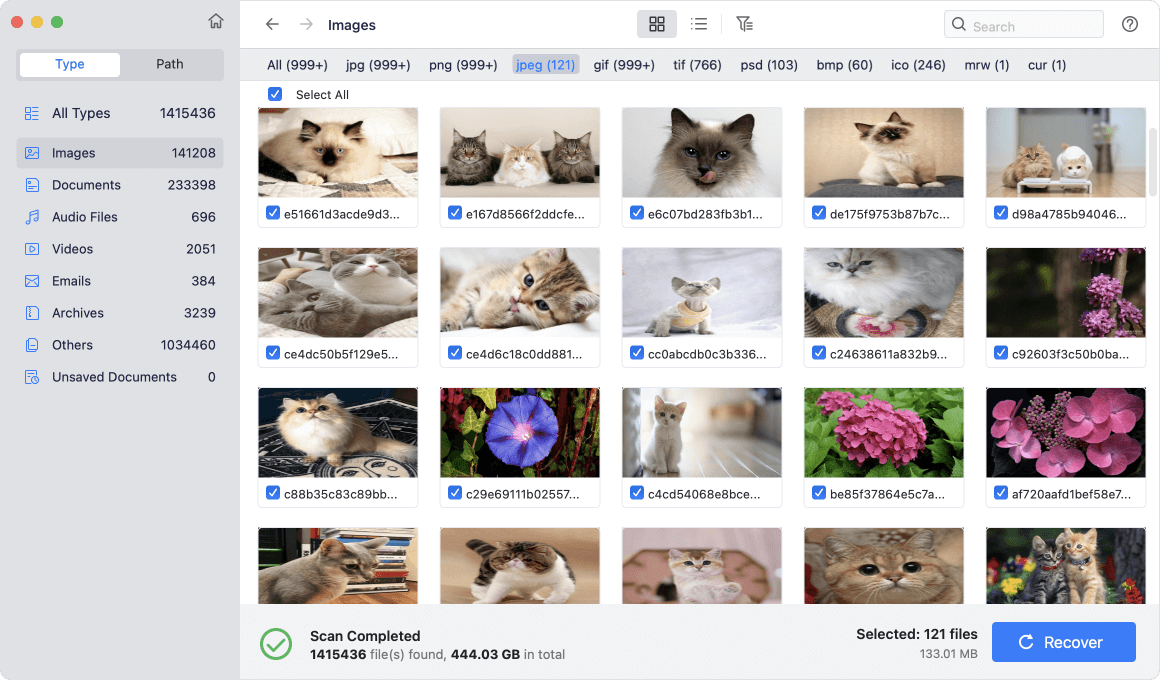
When to Seek Professional Help
Sometimes, technical difficulties or hardware issues may prevent you from completing the reset process. In such cases, it’s best to seek professional assistance. Contact Apple Support or visit an Apple Store to resolve complex issues. Additionally, third-party repair services specializing in Macs can provide expert help.
Wipe Data on macOS Ventura Before Selling Your Mac
How to prevent anybody from recovering the deleted data after a factory reset on macOS Ventura? You can use Mac data erasure program to wipe the free disk space of the internal drive.
Step 1. Download and install the best Mac data erasure program - Donemax Data Eraser for Mac, then open it.
Donemax Data Eraser for Mac
- Top data erasure software for macOS.
- Securely wipe data to avoid data recovery.
- 100% safe and easy-to-use.
Step 2. Open Donemax Data Eraser for Mac, choose Erase Free Space mode. Select the internal drive and click on Erase Now button.

Step 3. Select a data erasure standard and click Continue button to start. It wipes free disk space of the internal drive and permanently erase all deleted/erased/lost data from the drive.
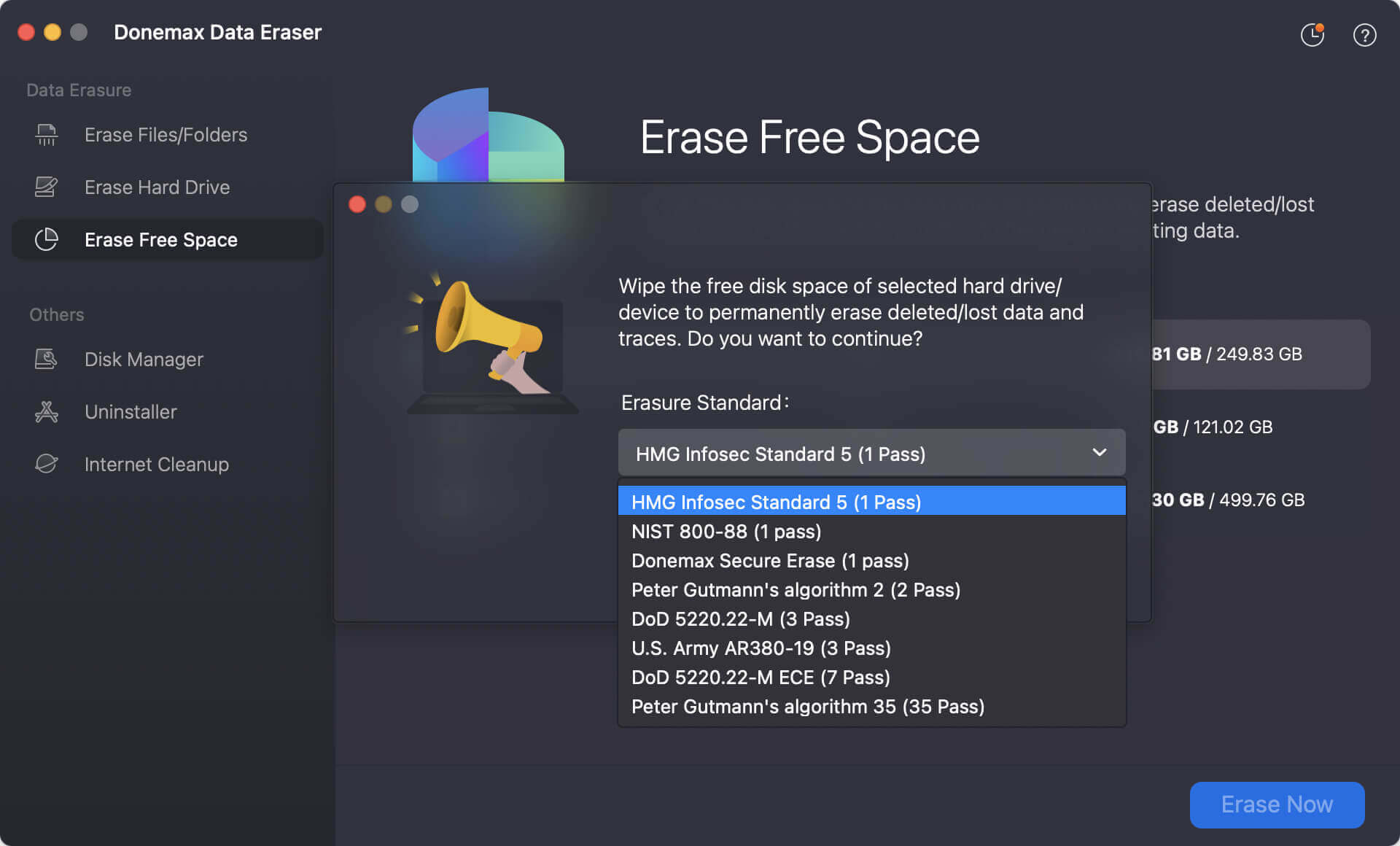
Conclusion
A factory reset . The process can resolve persistent issues or prepare it for a new owner. By following the steps outlined in this guide, you can reset macOS Ventura safely and confidently.
Remember to back up your data, sign out of accounts, and test your system after resetting. These steps can ensure a seamless experience. With the right preparation and a clear understanding of the process, you'll have a clean and efficient Mac.


Donemax Data Eraser for Mac
100% safe and powerful Mac data erasure program. It offers certified data erasure standards including U.S. Army AR380-19, DoD 5220.22-M ECE to securely and permanently erase data from Mac HDD/SSD and external storage devices, making data recovery impossible.
Related Articles
- May 14, 2025How to Factory Reset a M1 Chip Mac?
- Aug 21, 2023How to erase your Mac with Disk Utility & What to do if Disk Utility can't Erase a Drive?
- Sep 23, 2025Use Erase All Content and Settings on macOS [macOS Tahoe Supported]
- Aug 21, 2023How to Permanently Erase Files and Folders on Your Mac?
- Mar 03, 2025How to Wipe a USB Flash Drive on Mac: A Comprehensive Guide
- Oct 20, 2025Mac Data Eraser for Seagate Backup Plus

Christina
Christina is the senior editor of Donemax software who has worked in the company for 4+ years. She mainly writes the guides and solutions about data erasure, data transferring, data recovery and disk cloning to help users get the most out of their Windows and Mac. She likes to travel, enjoy country music and play games in her spare time.

Gerhard Chou
In order to effectively solve the problems for our customers, every article and troubleshooting solution published on our website has been strictly tested and practiced. Our editors love researching and using computers and testing software, and are willing to help computer users with their problems

